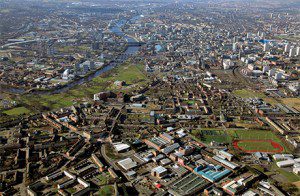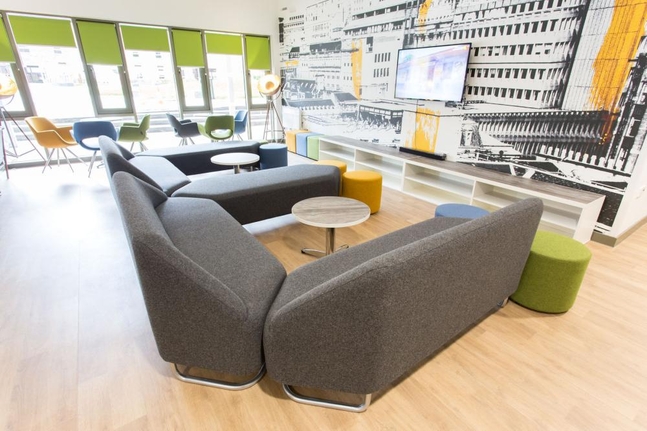ACCORDING to Fionna Kell, Inward Investment Manager at Clyde Gateway, the urban regeneration company currently redeveloping Glasgow’s East End, the team’s greatest achievement will come the day they’re no longer needed.
“For us, success would be not having to be here anymore because we’ve done ourselves out of a job,” said Fionna. “And we’d be happy with that as long as we manage to secure a Glasgow average for all the indicators – health, education, employment – in the area. If we do that then great, job done.”
Since 2008 Clyde Gateway has been working to effect physical, social and economic change in an area that spans Bridgeton, Dalmarnock, Rutherglen and Shawfield and is equivalent in size to 1,200 football pitches.
Once renowned for its industrial might, the East End of Glasgow and South Lanarkshire was more recently publicised for high levels of poverty and the socio-economic deprivation in local communities.
With a 20-year investment programme in place, Clyde Gateway was established to relieve and address the problems plaguing the area and attract people and businesses back into a once profitable part of the city.
Seven years into the development, with private and residential housing springing up, award-winning buildings like the Albus and Olympia emerging, and multi-national companies and creative startups eyeing the area with shared enthusiasm, how have local residents responded so far?
“We’ve worked right from the outset to make sure that the communities were involved with us,” Fionna explained. Too often regeneration projects have dealt with the physical but haven’t really addressed the local communities and their needs. We worked with the communities to understand what they needed and what they wanted to be addressed.
“We’ve had focus groups with residents’ associations, community meetings with housing associations and local networks in schools. The legacy of the problems in the area is maybe 30 to 50 years. It takes generations to change that.
“That’s why we’ve set our activity as a 20-year programme.”
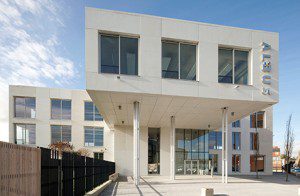
The Olympia building, originally opened in 1911 as Glasgow’s answer to the London Palladium, has become emblematic of Clyde Gateway’s regenerative vision and their relationship with surrounding communities.
After falling into disrepair following decades of use as a cinema and bingo hall, the Olympia was recently prioritised by local residents for regeneration.
Purchasing the building in 2009, Clyde Gateway then undertook an £8 million redevelopment of the Olympia that renovated and retained the original B-listed façade whilst entirely rebuilding the rest of the original structure.
Reopened in 2011, 100 years after its first incarnation, the Olympia now boasts a public library and café, a Glasgow University research centre in Population Health, high-end boxing facilities and two floors of office space.
Funded by and working in partnership with Glasgow City Council, South Lanarkshire Council, Scottish Enterprise and the Scottish Government, Clyde Gateway works on a circular model of investment in which revenue generated from development activities is further reinvested in future projects.
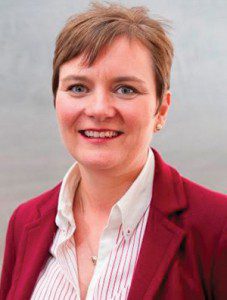
Although Fionna has said the initial funding ‘pump primed’ Clyde Gateway and is still vital, the company is now seeing receipts coming out the other end.
First encouraged by the local authorities’ decision to build an extension to the M74 motorway, Clyde Gateway was then buoyed by the mammoth announcement that Glasgow had secured the 2014 Commonwealth Games, and that some of the major sporting events and facilities, including the Emirates Arena and the Sir Chris Hoy Velodrome, as well as the Athletes’ Village would be located in Glasgows’ East End and within Clyde Gateway’s realm.
“We weren’t set up because of the Games, but the Games probably accelerated the need for regeneration,” said Fionna.
“We’ve been very clear that we’ve moved into legacy mode now and there’s a real emphasis on that. The Games were completed a year ago, in another three years time it will be the Commonwealth Games in the Goldcoast and a lot of people will be looking back and saying, ‘well what has the actual legacy been for Glasgow?’”
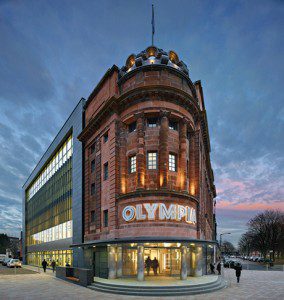
With the Athletes’ Village now redeveloped into a range of social and private residential housing, with a care home, local amenities and public spaces, the brief 11-day spell of the Commonwealth Games has sparked an interest in the area and created a legacy that continues to strengthen and endorse the vicinity’s regeneration.
The Games not only highlighted the work of Clyde Gateway, but also showcased the area’s local amenities, transport links and proximity to the city centre. Continued use of the Arena and Velodrome has brought reason for people who wouldn’t normally venture into the East End to visit the area, and with prestigious design agency Made Brave settled into the Albus building in Bridgeton, it seems residents and businesses are becoming increasingly respondent to the city’s revived Eastern corner.
“Perception issues do still exist regarding the East End but they’re breaking down,” explained Fionna. “People think it’s too far away or they don’t like the name, and then the minute they come out they realise how close it is and that it’s a nice area and they can sit in a café and watch the world go by like anywhere else. We’ve been able to point to real life examples of businesses who have made the move and are now thriving and growing and it just helps to challenge those perceptions.
“Probably one of the real standout moments was this time last year when the Games were on and we were sitting out on Bridgeton Cross one lunchtime; the sun was shining and the place was just heaving with people.
“Visitors for the hockey were all coming up through Bridgeton Station, the Athletes’ Village was full, the New Zealand cycling team came past us out training, Usain Bolt was tweeting about being out for his morning run in Glasgow and we’re sitting out there in the sunshine saying, ‘this is actually coming together here guys.’ That for us was a very positive moment when we began to feel, ‘you know what, transformation is happening.’”
This year Police Scotland moved into Clyde Gateway’s new £24 million development on the banks of the River Clyde in South Dalmarnock.
Spread over five floors, with just under 135,000 sq. ft. of office space, Riverside East now houses 1,100 Police Scotland staff and generated some 300 jobs during its 18-month construction, as well as 50 work experience and training placements for local residents.
“Securing the Police was really transformational for us – it’s there, it’s done, it’s real. It had been talked about for a very long time. There were times when we all thought ‘will this ever actually happen?’ and now it has,” added Fionna.
“In all of our contracts, whether it’s with a marketing agency or a contract for 110,000 sq. ft. building, every single one has a community benefit clause built in.
“Whether that’s creating work experience placements, running workshops in local schools or helping community groups, we make sure everyone that works with us gets what we’re about and contributes.”
Walking through the East End of Glasgow, as Fionna points to once decadent, now crumbling historic buildings Clyde Gateway has recently acquired, former factories and brownfield sites lying in wait to be developed, schools soon to be resurrected sitting alongside green landscaped spaces that have sprouted and glimmering modern office blocks recently opened that wrap around the river’s bends, it’s evident that whilst the company’s regeneration seems vast and all encompassing, their plans are tightly woven, concentrated and linked.
Each development, whether for social housing, business centres, creative hubs or public gardens, is intrinsically linked to a neighbouring project and in some way further supports, feeds into and facilitates the regeneration of surrounding sites.
Fionna said, “We have a very tightly defined area, we have a very small team, but we’re incredibly focused.
“We’re not just tackling the physical, every decision we make has to be justified, and not just the financial implications but the economic as well – ‘what jobs will this decision create? What are the benefits to our local residents? How will this impact on the communities?’
“So having that focus, you really are beginning to tackle regeneration in its biggest sense.
“Long term unemployment in this part of the city was sitting about 40% when we first started, now we’ve managed to drop that down to 30%, that’s 10% in only the last few years.
“It’s still way higher than the Glasgow average of around 20% but we’ve dropped it much quicker than other areas and it’s down to that really concentrated focus.
“This is not something that you can come into and deal with within a couple of years.
“You need to be in here and you need to tackle it comprehensively if you’re going to make that change.
“It’s an approach that has worked elsewhere and can work elsewhere but it’s about keeping that commitment.
“The fundamentals of this area are right. If we didn’t do anything else, physically we’re in a good location.
“Motorway access is there and train stations are there, so basic economic geography will tell you this is an area that should grow because you’ve got the basic infrastructure there.
“It will be another 10 or 15 years before we can say this has been a success, because it will take that long for regeneration to work its way through.
“This was never a short term plan that would end after the Commonwealth Games.
“The confidence shown by the local community, investors into the area and our business partners will ensure that Clyde Gateway continues to grow, and go from strength to strength for generations to come.”







